On more than one occasion, most of us wanted to look better or at least be satisfied with how we look. I will not go into the psychology and how you should always love yourself (I wrote about that enough times) but instead help you to learn about your body and how there are ways for you to be more satisfied with it, if that is even possible. Always be proud but never be satisfied, you can always do better. You can always do more.
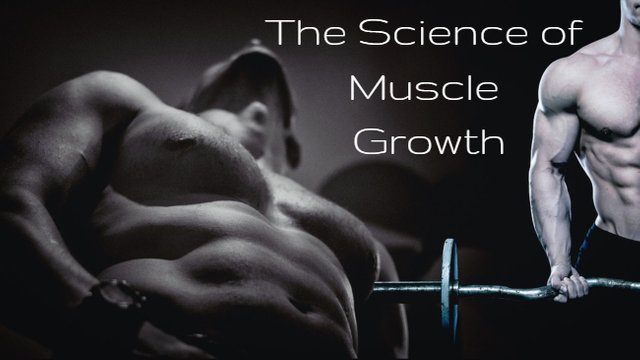
CC0 image, Pixabay, author: satyatiwari, adapted by me
Today, I will talk about biology and what exactly is needed for your muscles growth. Even if you are not interested in the subject, you can look at the pretty pictures because there will be a lot of pretty pictures. This text can be a part of your relaxing time while you are doing some research on how to get more fit and recovering from the last
@actifit app usage. Not heard about
actifit.io yet? Shame on you :) Well, it is your loss. It is an app that rewards you for your physical activity by giving you tokens and upvoting your actifit reports on steemit. Yeah, you got that right,
they are paying you for being active. They will give you money and I will give you some science about it, a pretty nice combo, right?


The first thing you need to know is that not all muscles are the same. There are approximately 700 known muscles in our bodies and there are 3 main types of them: smooth, cardiac, and skeletal. Smooth muscles build our internal organs and with the cardiac that build our heart, fall into the category of involuntary muscles. That means that they are not under conscious control but by the autonomic nervous system.
Skeletal muscle is a voluntary muscle
Sceletol muscles are attached to bones and are famous for their ability to contract and cause movement. They often come in a pair where one muscle is the primary mover and the other acts as an antagonist. When you bend your arm, your bicep contracts while your tricep is relaxed and vice versa. These muscles have a complex structure. They consist of elongated multinuclear cells called the myocytes (myofibers) and the muscle cells can be from 1 mm to 30 cm in length. The longest muscle cell in our bodies can be found in the sartorius muscle (runs down the length of the thigh, from knee to the hip) and is 30 cm long. Skeletal muscles do not only cause movement, they stop it too. They resist gravity to maintain posture with their small, constant adjustments to hold a body upright.
Maintening homeostasis...
These muscles contribute to the maintenance of homeostasis in the body by generating heat. Their contraction requires energy, and when ATP is broken down, heat gets produced which is very noticeable during exercise. Sustained muscle movement causes body temperature to rise, and when we are cold, shivering produces random skeletal muscle contractions to generate more heat. The structure of the muscles is organized with fibers where actin and myosin myofilaments are stacked and overlapped in regular repeating arrays to form sarcomeres. Actin and myosin filaments slide against each other and they are the ones responsible for the muscle contraction.
The energy for muscle function comes from intracellular organelles called the mitochondria, powerhouses of every cell in our bodies and responsible for delivering energy that the cells need to function.
There are two types of skeletal muscles
Two types of skeletal muscles are slow twitch and fast twitch. Slow twitch muscle fibers are better for endurance activities and work for a long time without getting tired while the fast twitch muscles are good for rapid movements because they contract quickly. Fast twitched get tired fast and consume lots of energy. Most of our muscles are made up of a mixture of both but know that muscles responsible for eye movements are made up of fast twitch muscle fibers while those involved in maintaining posture contain mainly slow twitch muscle fibers. Your muscles do not need to be big to have a lot of power. The skeletal muscles in your body contract when they receive signals from motor neurons. Those neurons are triggered by a part of the cell called the sarcoplasmic reticulum. Basically, motor neurons tell your muscles to contract and the better you become at having those signals tell your muscles to contract, the stronger you can get. Some powerlifters can be relatively smaller compared to bodybuilders but they can lift significantly more weight because they are able to activate those motor neurons and contract their muscles better.


When it comes to our muscles contracting during exercise, since they are voluntary, all we have to do is think about contracting them and they will but what actually happens there? All of your cells have membrane potentials or electrical gradients across their membranes. Relative to the outside, the inside of the membrane is around -60 to -90 mV and we call it the cel’s membrane potential. Cells use their membrane potentials to generate electrical signals and they do that by controlling the movement of charged particles (ions) across their membranes to create electrical currents by opening and closing ion channels. Those currents, that are generated by ions moving, form the basis of both neural signaling and muscle contraction.
Electrical signal travels along
a cell membrane as a wave
Every time you want to do that push-up or lift a weight, the membrane of your skeletal muscle must first be "excited", it must be stimulated to fire an action potential. The action potential sweeps along the sarcolemma as a wave, and is "coupled" to the actual contraction through the release of calcium ions. Ca++ interacts with the shielding proteins and forces them to move aside so that the actin-binding sites are available for attachment by myosin heads. The myosin pulls the actin filaments toward the center which then shortens the muscle fiber. All this starts with a signaling from the nervous system. Do you remember my post about magnesium? Remember how I have told you that you need Magnesium because of your muscles and because of Calcium? This is it. This is why you need it. While calcium stimulates the muscle fibers to contract, Magnesium counters this effect and helps cells relax. It competes with calcium for these same binding spots. If there is not enough magnesium to compete with calcium, muscles will contract too much and you will get cramps or spasms.


You know how all the experts say how rest is just as important as actual exercising? There is a reason behind them saying that. Muscle adaption/growth occurs while you rest, not while you are exercising and it happens whenever the rate of muscle protein synthesis is greater than the rate of muscle protein breakdown. Body repairs and/or replaces damaged muscle fibers through a cellular process where muscle fibers are fused together to form new muscle protein strands (myofibrils). These repaired myofibrils increase in thickness and number to create muscle hypertrophy or how most people call it: muscle growth. Why are some people better at it or faster at it? A little thing called genetics.
Hard or easy to activate your satellite cells?
Genetics, genetics, genetics...
When Satellite cells are activated, they help to add more nuclei to the muscle cells and therefore contribute directly to the growth of myofibrils (muscle cells) and they are the ones who make a difference between people who gain muscle easily and us regular mortals who gain them hard. It is not impossible for us normal ones, it just takes more time and effort. The more you can activate these satellite cells, the more you will grow your muscles. You can read the research paper here:
Potent myofiber hypertrophy during resistance training in humans is associated with satellite cell-mediated myonuclear addition: a cluster analysis. by Petrella JK, Kim JS, Mayhew DL, Cross JM, Bamman MM
Another thing that we need to cover here is the muscle transcription factor Myogenin. During myogenesis, it plays a pivotal role in orchestrating the expression of other muscle-specific genes and ever since those two research on mice came out 25 years ago, where the lack of Myogenin blocked proper myogenesis, there were no studies to identify a specific cellular or molecular function for Myogenin during myogenesis. Not until 2018 that is. Researchers from the Randall Centre for Cell & Molecular Biophysics believe they have reached a new milestone in the understanding of muscle formation. The paper was published in Nature Communications and the authors found that Myogenin is a master regulator of muscle cell fusion. It controls the formation of functional muscle fibers and sustains normal muscle growth during both embryonic and adult muscle development. Next time you hear a word hedgehog, it may not be about an animal because they have also found that another molecule, called Hedgehog, promotes the formation of multinucleated muscle fibers via a second Myogenin-independent pathway. You can read the full paper about the research here:
Myogenin promotes myocyte fusion to balance fibre number and size by Massimo Ganassi, Sara Badodi, Huascar Pedro Ortuste Quiroga, Peter S. Zammit, Yaniv Hinits & Simon M. Hughes


You have all probably heard about those 3 mechanisms that make muscles grow: tension, damage, and metabolic stress. Most of the fitness trainers and texts you will find online will talk about those. You may even know a lot about this and are freaking out about me talking about some satellites here and think I am going crazy. Nope, still sane, just up to date with the newest researches. Before I continue with blowing your mind, let's recap what we have known up till now about those 3 mechanisms:
1.Muscle tension
To make your muscles grow, you have to apply a load of stress greater than what your body or muscles had previously adapted too. Most often, this is achieved by lifting heavier weights. The additional tension on your muscles helps to cause changes in their chemistry which allows growth factors. This tension also dramatically effects the connection of the motor units with the muscle cells. Feel free to read more about it here:
The mechanisms of muscle hypertrophy and their application to resistance training by Schoenfeld BJ
2.Muscle Damage
The local muscle damage causes a release of inflammatory molecules and immune system cells which leads to muscle growth. When you feel sore after a workout, it means that you have experienced the localized muscle damage from working out.
3.Metabolic Stress
Metabolic stress causes cell swelling around the muscle. This contributes to muscle growth without necessarily increasing the size of the muscle cells. The addition of glycogen, which helps to swell the muscle along with connective tissue growth, is the reason behind it. This growth is known as sarcoplasmic hypertrophy and is one of the ways that people can get the appearance of larger muscles without increases in strength or when you see a person with large muscles that cannot lift as much as you can.
Where are the satellite cells?
Almost everything that you have learned so far has satellite cells in the background of it. It is true that trauma to the muscle will make it grow but it is because of the activation of those satellite cells. They are located on the outside of the muscle fibers between the basal lamina and the plasma membrane (sarcolemma).
When you start your intense exercise, after some time, there will be trauma to the muscle fibers. That disruption to muscle cell organelles activates satellite cells. The biology of repairing or replacing damaged muscle fibers begins with the satellite cells fusing together around muscles fibers which directly leads to increases in muscle fiber cross-sectional area or hypertrophy. They are simple cells with only one nucleus and can replicate by dividing. When they multiply, some remain as organelles on the muscle fiber and the majority differentiate and fuse to muscle fibers to form new muscle protein stands (myofibrils) and/or repair damaged fibers. Some satellite cells even serve as a source of new nuclei to supplement the growing muscle fiber. Having additional nuclei, the muscle fiber can synthesize more proteins and create more contractile myofilaments (actin and myosin) in skeletal muscle cells.


Hormones or hormone-like compounds stimulate satellite cells to produce the gains in the muscle fiber size. When we say growth factors we are talking about hormones. They affect muscle growth by regulating satellite cell activity and the Hepatocyte growth factor (HGF) is a key regulator of their activity. Another important growth factor in muscle repair is the Fibroblast growth factor (FGF) which play a role in forming new blood capillaries during muscle regeneration. There is also Insulin that stimulates muscle growth by enhancing protein synthesis and facilitating the entry of glucose into cells but most talk is, of course, about the growth hormone and testosterone.
The growth hormone and testosterone combo...
Resistance exercise stimulates the release of growth hormone from the anterior pituitary gland. Released levels are dependent on exercise intensity so do not expect to achieve great results without putting some extra effort to it. Growth hormone helps to trigger fat metabolism for energy use in the muscle growth process so if you were wondering who is to thank for burning your fat, growth hormone is and it also stimulates the uptake and incorporation of amino acids into protein in skeletal muscle. Oh and, by the way, have you ever wondered where does the burned fat go? You breathe it out. This does not mean that if you sit and breathe more, you will lose weight, there is more to it than just that.
The proportion of a triglyceride molecule’s mass exhaled in CO2 is the proportion of its molecular weight (daltons) contributed by its 55 carbon atoms plus four of its oxygen atoms:
(661 Da (C55)+64 Da (O4))/(861 Da (C55H104O6))×100=84%
The proportion of mass that becomes water is:
(105 Da (H104)+32 Da (O2))/(861 Da (C55H104O6))×100=16%
These results show that the lungs are the primary excretory organ for weight loss. The water formed may be excreted in the urine, faeces, sweat, breath, tears, or other bodily fluids. Our calculations show that the lungs are the primary excretory organ for fat. Losing weight requires unlocking the carbon stored in fat cells.
-Ruben Meerman and Andrew Brown
You can read the full article here:
When somebody loses weight, where does the fat go? by Ruben Meerman and Andrew Brown
What was that last thing, oh yeah, testosterone. This hormone stimulates growth hormone responses in the pituitary and by that enhances cellular amino acid uptake and protein synthesis in skeletal muscle. It also increases the presence of neurotransmitters at the fiber site which helps activate tissue growth. The interaction with the nuclear receptors on the DNA results in protein synthesis and sure enough, it may also have some type of regulatory effect on satellite cells. Told you that everything was connected to those satellite cells in some way...


I hope that you have enjoyed those pretty pictures and learned something along the way. I also hope that you have figured out how there is a complex molecular biology behind your muscle growth and how your genetics play a huge role. The reason why I am hoping that is because a lot of people get discouraged fast when they first start exercising because the results do not come as fast as they expect and when we see someone else reach those results faster than us with doing less, we get even more discouraged. I am here to tell you: STOP COMPARING YOURSELF WITH OTHERS! Your body and his/hers body are not the same when it comes to genetics and as long as you work hard and do not give up, those results will come sooner or later.
Weeks, months, or years?
It does not matter.
It does not matter how long it will take, enjoy the journey and be proud of your small accomplishments. Resistance exercise helps and the interesting part is how exercise stimulates protein synthesis within 2-4 hours after the workout which may remain elevated for up to 24 hours. This means that you should never quit because your body will respond to exercising every single time. Not seeing results does not mean that there are no results. Keep in mind that genetics and gender play a role in your success and so does your age but they should be seen as motivators, not stoppers. Another great motivator that will help you is
@actifit app. When you see a low number of steps and know how only 10 minutes of exercising will make it bigger by 1000, you will not think too long and make that number bigger. 10 minutes = 1000 actifit points (calculated for me, your calculation may vary) and I know how you have 10 minutes to give to your body more often than you think. One hour of walking a day will get you 6000 points. What are you still waiting for? You have read the post, now go outside!
To read more about this topic, check out these REFERENCES:
Skeletal muscle structure and function from ncl.ac.uk
Skeletal Muscle from lumenlearning.com
Study Sets a New Milestone in the Understanding of Muscle Formation from scienceandtechnologyresearchnews.com
When you lose weight, where does the fat go? Most of the mass is breathed out as carbon dioxide, study shows from sciencedaily.com
How do muscles grow? Young sub Kwon, M.S. and Len Kravitz, Ph.D. from unm.edu
How Do Muscles Grow? The Science of Muscle Growth from builtlean.com
THE MOLECULAR SWITCH BEHIND MUSCLE FORMATION from research.hsr.it
New insights on triggering muscle formation from sciencedaily.com
The formation of skeletal muscle: from somite to limb by Margaret Buckingham, Lola Bajard, Ted Chang, Philippe Daubas, Juliette Hadchouel, Sigolène Meilhac, Didier Montarras, Didier Rocancourt, and Frédéric Relaix

Until next time,
KEEP YOUR SMILE ON!



Image sources AND LICENCES in order of appearance:
- all images used in this post are free for commercial use, they are royalty free with the links to original images provided under them
- titles are made with the CC0 image from Pixabay that can be found here
- line divider that I use is from FREE CLIPART LIBRARY, and is here
- my bitmoji avatar was created on https://www.bitmoji.com/, visit the site to create yourown
PROUD MEMBER OF:


@steemitbloggers























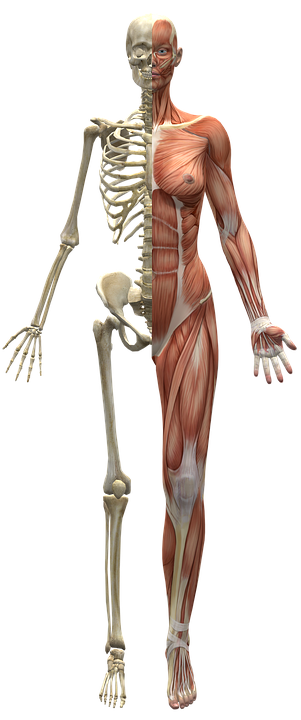
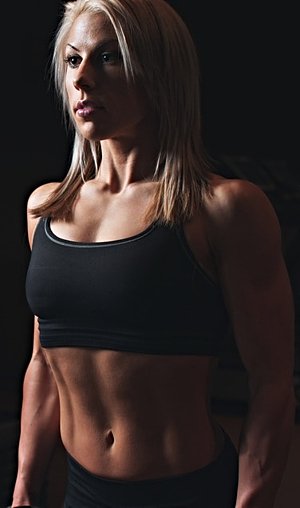
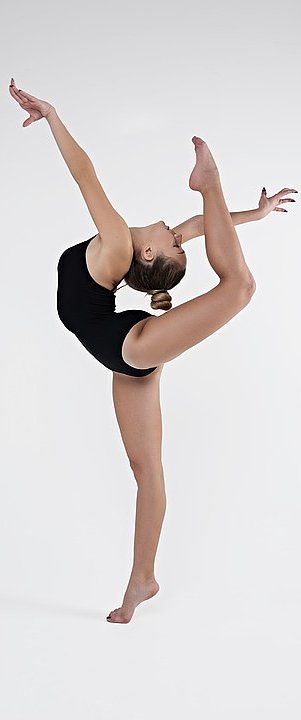


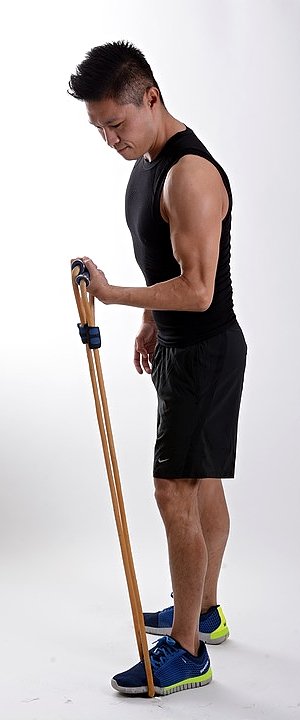
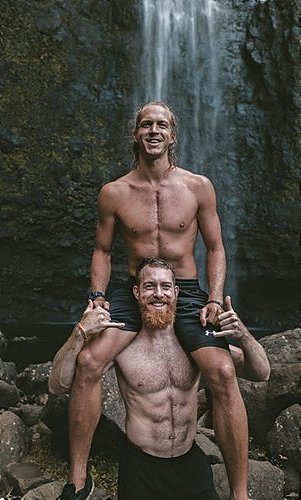
Wow! SO much fantastic info here - I will resteem it, because I'll need to read it a few times for it to sink in!
It raised many thoughts - fast twitch muscles being responsible for eye movements, for example. I suppose that's why when people get elderly their eye movements slow down. And the size of the muscles – as a climbing fanatic, I've noticed that really good climbers are often so strong that they can do amazing things with their bodies, yet they tend to be lithe, with small muscles all over the place! When you see a really good climber on the wall (there's a cafe with balcony seats at the climbing centre I go to) EVERY single muscle in their body is active from the face to the toes.
I also do indoor bouldering, where the upper body is used a lot. Women, I've heard, often have lower scapular strength - ie the shoulder girdle is often not so strong - as men. We often have to focus on building strength in this area. I've been doing this, but when I sprained my ankle at the end of August, I took complete rest for a month, and my strength is only just beginning to return to what it was.
Last Friday I was at my bouldering club, and I noticed that I'd become quite fearful of some of the high-level routes. I kept quitting as they got higher. With one route in particular, I felt I was almost there, but just couldn't bring myself to finish the last two moves. All the guys could do it, but only one woman. The guys were making it look so easy. Eventually I steeled myself, and went for it. I completed it, but not as easily as the guys. Then I realised that my "fear" was actually realisation that my scapular strength wasn't quite back to what it had been. It was almost there, but not to the point where I could trust myself to support my body with just one arm.
Many of the other women in the club don't think they can do these overhanging routes at all - but they can! It just takes us a bit more perseverance and focus on that shoulder area, and it actually doesn't take as much time or effort as you'd think. You don't have to lift weights or anything. I just do some yoga and a few pull-down exercises, as well as climbing, which builds strength.
Well, I've rambled on a lot, but that's because I find muscles fascinating! Great post :)
Not a single hot, fit girl :D bad post, bad...
Do not forget about the one who wrote the post 😉
Hahahahahahhaa perfect response!!!!
Posted using Partiko Android
This story was recommended by Steeve to its users and upvoted by one or more of them.
Check @steeveapp to learn more about Steeve, an AI-powered Steem interface.
Thanks Steeve 💚
Such an interesting read, I am good for walking a lot, and shame on me I know I do not use actifit yet, but I may try it again, but I am slack at doing actual exercises other than walking and it is something i need to work on
Walking is good too, amazing actually and it does wonders for your body so use that @actifit app on your walks around the city and do not miss your chance to get some benefits from it, financial and physical. Where else would you get that combo? :)
What I didnt like about it previously was you had to do the post from actifit and with me posting photos I didnt want to add an actifit post each day with nothing else but the steps but maybe that has changed
You can make a normal post, html and markdown are supported in the app and if you like your computer more (like me) you can edit the post once you publish it and make it shine. I write a post on my computer, save it to a doc file and send the file to my phone. I copy everything from that file and put into the app and publish it from my phone. The actifit parts is added at the end of my text by the app and the post has everything I want. There are other ways to do it of course, you can write everything from the app because EVERYTHING is supported. I do it this way simply because I prefer the bigger screen on my laptop, nothing more. The app really has it all.
OK that makes sense I should try it again, thanks so much for explaining the process to me
This post has been voted on by the SteemSTEM curation team and voting trail in collaboration with @utopian-io and @curie.
If you appreciate the work we are doing then consider voting all three projects for witness by selecting stem.witness, utopian-io and curie!
For additional information please join us on the SteemSTEM discord and to get to know the rest of the community!
Om my lovely people, gratitude is beyond words, much love! 💚💚💚
Hi @zen-art!
Your post was upvoted by Utopian.io in cooperation with @steemstem - supporting knowledge, innovation and technological advancement on the Steem Blockchain.
Contribute to Open Source with utopian.io
Learn how to contribute on our website and join the new open source economy.
Want to chat? Join the Utopian Community on Discord https://discord.gg/h52nFrV
Hugs and kisses and then some more! Your support is very much appreciated, thank you! 💚💚💚
The depth and breadth of information in your posts always makes for a good and informative read. Have you studied science, or do you just enjoy researching scientific topics?
I've seen a few people recently posting information using the Actifit app, and I just thought it was a random app that they were using. I'll head over and check it out now - like you said, being rewarded for being active... why not!!
I have a background in physics and have been a tutor in physics, chemistry, math, English, and computer science for high school students for the last 15 years ;)
Go try actifit, you will not regret it! 💚
Congratulations! This post has been upvoted from the communal account, @minnowsupport, by zen-art 💚 from the Minnow Support Project. It's a witness project run by aggroed, ausbitbank, teamsteem, someguy123, neoxian, followbtcnews, and netuoso. The goal is to help Steemit grow by supporting Minnows. Please find us at the Peace, Abundance, and Liberty Network (PALnet) Discord Channel. It's a completely public and open space to all members of the Steemit community who voluntarily choose to be there.
If you would like to delegate to the Minnow Support Project you can do so by clicking on the following links: 50SP, 100SP, 250SP, 500SP, 1000SP, 5000SP.
Be sure to leave at least 50SP undelegated on your account.
cool thanks. didn't realise it took about 10 min to clock up 1000 points. magnesium! that's what i have forgot to take lately
Yeah, 10 min = 1000 points, at least for me, it works for walking, running, cardio when the phone is in my pocket and Orbitrek machine but I have heard (not tried) that it does not work pretty well for cycling but I guess it all depends where you have it. If you have it on your leg somewhere it should work too. Take magnesium, your body needs it! 💚
This is a great read and my 20 year old boy is going to get a look at if for sure, he is into "body building " and needs to really understand how things work. Thanks for doing such a great job in detailing this information.
I am glad that you found it interesting and yeah, give to him to read. He will benefit from it for sure 💚